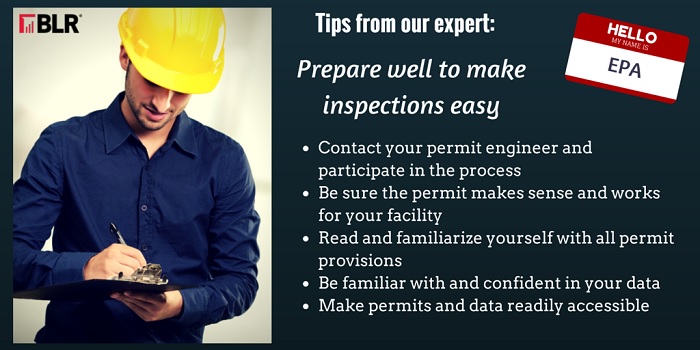No one looks forward to the day when the regulatory authority arrives at your facility for an inspection. Will he or she find issues of noncompliance? Will an enforcement action or penalty be forthcoming? But remember, the ultimate goal of the inspector is not to write up a notice of violation but to ensure your facility operates in compliance with all applicable requirements. Here are some general things facilities managers should be aware of when it comes to facility permits in order to be prepared for an inspection.

Gorodenkoff / Shutterstock.com
One of the first things the inspector will do is request to see your permits. From there he or she will evaluate your records and other documents to determine if they satisfy the conditions of the permit. He or she will then likely tour the facility to see if what is happening in the facility is accurately represented in the permit. But the enforcement process begins long before the day when the inspector shows up at your door and asks to see your permits.
Beginning with the Permit
The ability to avoid enforcement actions starts even before a permit is issued. During the planning and application process, the applicant has the opportunity to help shape the permit into one that works for the facility and enables compliance. Even before the permit application is submitted, the applicant should establish contacts and open lines of communication with the permitting authority. This will allow the applicant to participate in the permitting process and interact with the permit engineer to help ensure that the final permit is one with which the facility can practicably comply.
As the permittee, you must be able to demonstrate compliance with each regulatory requirement, but with most requirements, and unless specifically identified in the regulation, there is more than one way to demonstrate compliance. For those requirements identifying a specific method of compliance in the regulation, there is very little flexibility, and it will be written into the permit as cited in the regulation. However, in other instances there is more leeway to establish a condition that works for your facility. If the drafted permit condition or method of compliance is overly burdensome or is not practicable at your facility, develop an alternative method that, based on sound science and engineering, will adequately demonstrate compliance with the given requirement. Use your established lines of communication to propose your method to the agency’s permit engineer, and help shape a permit that works for your facility, adequately demonstrates compliance, and keeps the regulators happy.

Ending with the Permit
Once you receive your final permit, read it. This sounds obvious, but it doesn’t always happen. Sometimes permits get filed in a cabinet only to be seen again when an inspector arrives, which is a strategy that will most likely end in an enforcement action.
Read the permit and become familiar with the provisions, because these are the standards to which you are being held. Pay close attention to the monitoring and recordkeeping provisions of the permit, as this is where much of enforcement these days is centered. You must be in compliance with emissions, effluent, and other standards, but equally important is the ability to provide documentation of that compliance through monitoring data and recordkeeping.
So be sure to collect and record data in a manner that allows you to be confident in the data, and be able to explain how the data is obtained. Record data specifically to document compliance, so at the time of data collection be sure the data readily allows comparison to the given standard, and actually indicates compliance. If not, take actions to correct the problem and document the deviation and corrective actions. Also, evaluate the data to determine if it makes sense, by comparing it with historical data and making sure it is within an expected range.
Inspection Day
When the day does come when the inspector knocks on the door, be sure to know where all your permits and associated records are located, and be able to make copies available to the inspector. If you have planned for compliance, by being involved in the permitting process from the application stage and even earlier through the data collection and recordkeeping, you can be confident the inspector will likely be satisfied, and enforcement actions will not be forthcoming.
